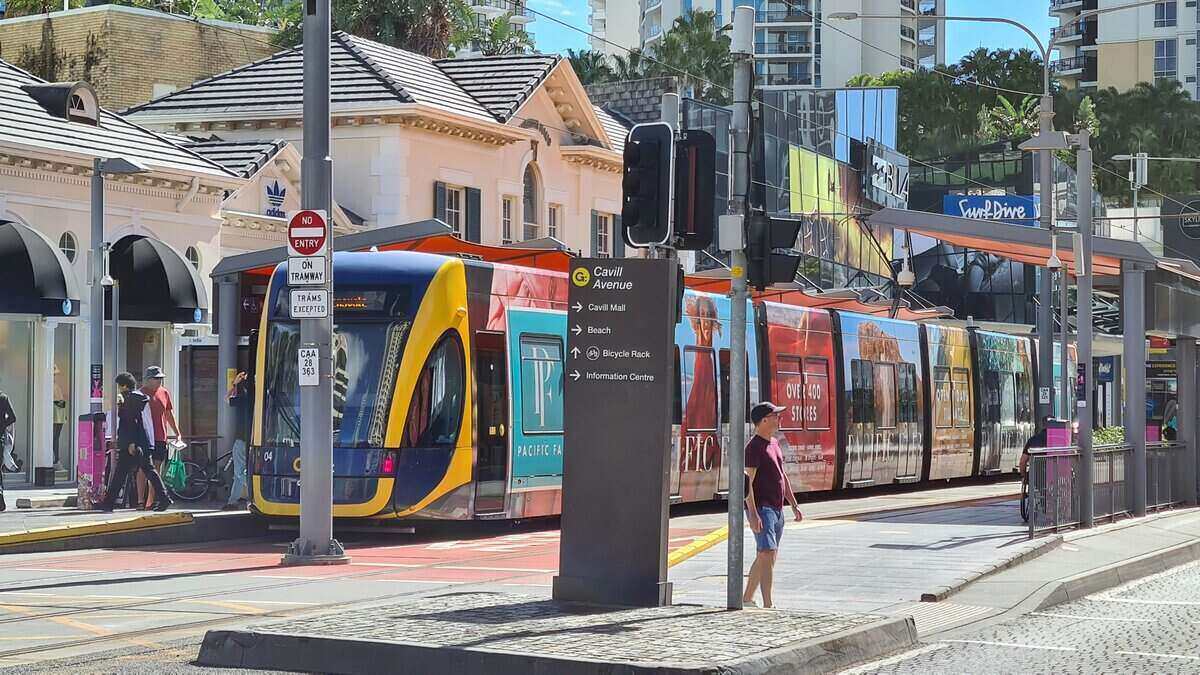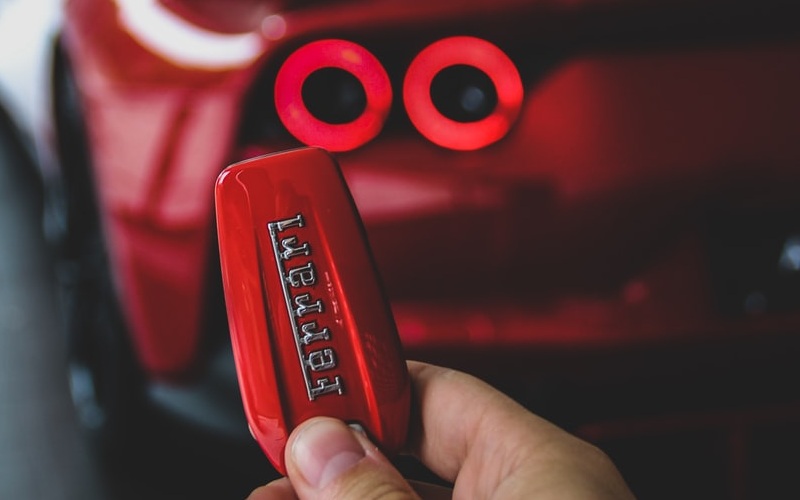Many people know that car dealers don’t necessarily have your best interests at heart when it comes to financing your vehicle. In fact, the 2021 Roy Morgan Image of Professions Survey revealed Australians consider car salesman to be the least trusted profession, pipping real estate agents and politicians. *Cue the shocked face.*
But there’s no denying that buying a car can be a daunting process, so sometimes it make sense to organise finance through the dealership to make the process easier for yourself. No one’s judging.
If this is the path you’re considering, keep in mind a dealer may trick you into paying more than need be or sign you up for features you were never after in the first place. So, during your next car purchase, be on the lookout for the following six car dealer finance traps.
Advertisement
In the market for a new car? The table below features car loans with some of the lowest interest rates on the market.
| Lender | Car Loan | Interest Rate | Comparison Rate* | Monthly Repayment | Interest Type | Vehicle Type | Maximum Vehicle Age | Ongoing Fee | Upfront Fee | Total Repayment | Early Repayment | Instant Approval | Online Application | Tags | Features | Link | Compare | Promoted Product | Disclosure |
|---|---|---|---|---|---|---|---|---|---|---|---|---|---|---|---|---|---|---|---|
5.99% p.a. | 7.12% p.a. | $580 | Variable | New | No Max | $8 | $400 | $34,791 |
| Promoted | Disclosure | ||||||||
6.52% p.a. | 6.95% p.a. | $587 | Fixed | New, Used | No Max | $0 | $350 | $35,236 |
| Promoted | Disclosure | ||||||||
6.28% p.a. | 6.28% p.a. | $584 | Fixed | New | No Max | $0 | $0 | $35,034 |
| Promoted | Disclosure |
What is dealer finance?
Dealer finance can be any type of loan or lease arrangement offered by car dealerships to allow customers to drive away with the car quicker. Dealer finance can often offer lower interest rates than standard car loans, but may require a balloon payment to be made at the end of the finance period. Dealer finance is usually limited to new cars only.
While the interest rate could be lower through dealer finance, you may be getting yourself into more than what you bargained for.
According to the Australian Consumer and Competition Commission (ACCC):
“Dealers will be willing to sell some goods and services with a lower mark-up (including new cars) if this means they can sell more high mark-up services (such as parts, insurance, and finance).”
1. Balloon payment included in your finance package
Structuring your loan to include a balloon payment may seem like an attractive option as it will lower your ongoing repayments. However, what you don’t know is that a balloon payment will increase your interest costs, and it may take you longer (months or even years) to achieve equity in the car and be able to sell it without additional costs.
Here is an example:
A standard $40,000 car loan financed over five years at an 8% interest rate with will have monthly repayments of $811. But with a 30% balloon payment, the monthly repayments will be $648.
| $40,000 5-year car loan at 8% interest rate | ||
| Monthly repayments | Total interest cost | |
| No balloon | $811 | $8,663 |
| 30% balloon | $648 | $10,864 |
Despite a drop in monthly repayments of $163 (if you have a balloon), it will be at the expense of an extra $2,201 in interest costs over the five years.
Also, at 36 months, which is typically when most people want to upgrade their cars, with a balloon you will still owe $24,553 on the loan, which is $6,620 more than if you didn’t have a balloon. This can make it harder to achieve equity and upgrade.
Some dealers may even up-sell the interest rate by applying a balloon payment - by avoiding rate discussions, they could increase the interest rate without you knowing, leading you to pay more.
However, as of November 2018, ASIC banned flex commissions in the car finance space. Under the new rules, lenders take responsibility for working out the interest rate that applies to a particular loan, and dealers can't suggest a different rate that would offer them a greater commission.
2. Selective loan presentation
Car dealerships often only have access to a handful of lenders, possibly limiting you from selecting a lender with a competitive interest rate, low fees, and additional features.
A dealer may even present you with two lenders who have approved you for a car loan. From there, you can choose which one suits your needs best. Yet, you have no way of knowing whether other lenders approved you too, with potentially a lower interest rate. In this case, you are placing all your trust in the dealer that they have presented you with the best deal possible.
Remember, a dealer’s goal (most of the time) is to make as much money from you as possible. Opening yourself up and conducting your own research on various car loan products could greatly impact the interest rate you are offered.
3. Zero finance - discounted dealer rates
Have you ever walked into a dealership and been offered zero finance or a discounted interest rate and thought, “Gee whiz who would pass this up?”
While a deal like this may sound amazing, remember the age old saying: if something sounds too good to be true, it probably is.
From time to time, some car dealers may advertise '0% car finance' offers. As the offer suggests, under a 0% car finance deal you don’t pay interest on your repayments. While this can be an attractive incentive, these advertisements aren’t always what they seem and can have hidden costs involved.
These deals can involve paying a higher price on the car (plus no negotiations on the asking price), a large balloon payment at the end of the term, or are only 0% interest for a set ‘promotional’ period before reverting to a high interest rate.
Generally speaking, if the interest rate is lower than a home loan rate, you need to be questioning the dealer’s motives.
Here is an example to consider:
Dealership A: Car costs $50,000 with an advertised interest rate of 2%. You ask for a discount on the car (as most of us usually do) but the dealer says no. The estimated repayments are $500.
Dealership B: The same car costs you $45,000 (as you were able to get a $5k discount) with an interest rate of 6%. But in this case, the estimated repayments are $490.
In the end, the $5,000 discount on the car outweighed the higher interest costs - you’re better off as your car loan repayments are lower.
Moral of the story? Be sure to do your research, check the comparison rate, and read the terms and conditions (Yes! Read the small print…) so you know what you’re signing up for.
4. Car insurance add-ons
When you buy a new vehicle, the car dealer may try to 'add on' insurance. Unfortunately, dealers can overload you with information and choices, which may lead you to choose products they make high commissions on, but are likely poor value for you.
Over a three year period between 2013-2015, ASIC data found car buyers obtained little if any financial benefit from buying add-on insurance, especially these forms of cover: credit insurance, gap insurance, loan termination insurance, mechanical breakdown insurance, and tyre and rim insurance. Car dealers got four times more in commissions ($602.3 million) than consumers received in claims ($144 million).
Not only does the cover benefit the dealer greater, but most add-on insurance premiums are packaged in the car loan, which can substantially increase the cost of the product by increasing the loan amount and interest paid.
From 5 October 2021, salespeople must wait four days before selling you add-on insurance. So, take the time to consider whether this is an extra you really need.
5. Extending the loan
To make cars seem more affordable, a dealer may offer an extended car loan offer e.g. six to seven year loan term. While stretching out the loan term may seem like a great option (as you’re paying less in repayments, of course), you will actually end up paying more interest over the life of the loan. Plus, since you’re repaying less each month, you may be owing more than the car is worth for a longer time.
6. Guaranteed buybacks
A guaranteed buyback is when you and the dealership agree to a pre-determined value for you to sell the car back to the dealer after the loan period is up and the balloon payment is due. Essentially, it provides a way of locking in the future value of your car. Seems like a sweet deal, right?
Yes, but also maybe not. There are a number of catches that come along with this type of product:
- Mileage estimate - Should you turn up with more kms on the car than agreed, you will likely have to pay some hefty fees.
- Wear and tear - If the car has rust, scrapes/scratches, dents, immovable stains, ripped fabric etc. the cost of amending this is subtracted from the guaranteed future value.
- Dealer exclusive - Guaranteed buyback is only available through dealership finance.
- Higher interest rates - If the vehicle depreciates more than expected, that’s on the manufacturer. However, to mitigate the risk, the dealer may charge higher rates to protect itself.
Read More: What is guaranteed buyback on car loans?
Savings.com.au’s two cents
One thing I really want to stress is - don’t walk away from this article thinking car dealer finance is something to avoid for the rest of your life. Car dealer finance can be the right option for some buyers as it’s convenient (drive away on the same day), simple, and you may be able to negotiate aspects of the financing. If that seems like the right fit for you, then go for it!
But before you apply for finance through a car dealership, it may be beneficial to apply for car loan pre-approval through a lender. This way, you’ll have an interest rate and ongoing repayments to compare back to when discussing finance with a dealer. In other words, you’ll know if you’re being ripped off or not.
When weighing up between dealer finance or going straight through a lender, ask yourself: “Does one option weigh up better than the other? Does one option seem more reliable and have less financial risk?”
Image by SCREEN POST via Unsplash






 Denise Raward
Denise Raward
 Harry O'Sullivan
Harry O'Sullivan


 Dominic Beattie
Dominic Beattie

